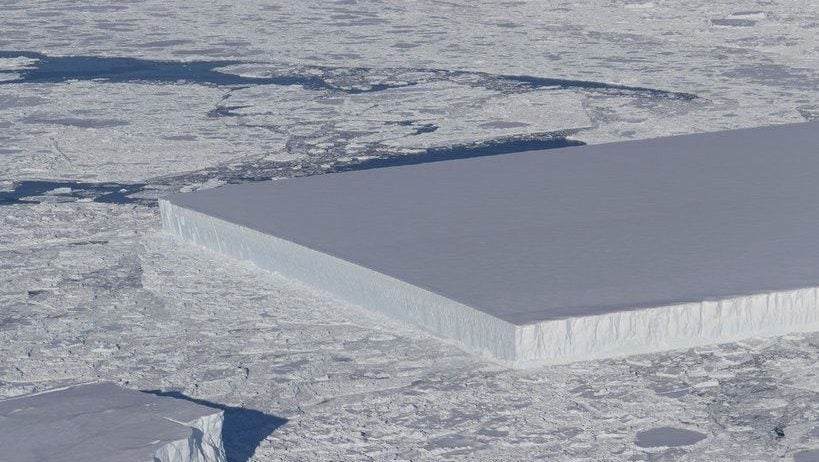This perfectly rectangular iceberg would like to object to your ideas of natural geometry
At some point someone said, “there are no right angles in nature,” and then everyone believed that person. Precise right angles might be hard to come by, but approximate right angles are everywhere. Salt crystals are cubic in nature. Many trees form approximate right angles with the ground. And recently NASA found an Antarctic iceberg that’s absurdly rectangular—or possibly square, it’s hard to tell from the photo. Either way, it would like to request a referendum on this notion of impossible natural geometry.


At some point someone said, “there are no right angles in nature,” and then everyone believed that person. Precise right angles might be hard to come by, but approximate right angles are everywhere. Salt crystals are cubic in nature. Many trees form approximate right angles with the ground. And recently NASA found an Antarctic iceberg that’s absurdly rectangular—or possibly square, it’s hard to tell from the photo. Either way, it would like to request a referendum on this notion of impossible natural geometry.
The iceberg is afloat in the Weddell Sea, just off the Larsen C ice shelf on the Antarctic peninsula. It probably broke off from Larsen C recently—its edges are crisp and pointy, not yet eroded by the waves and water.
The photo was taken last week from aboard a NASA ice-surveying flight. You might remember Larsen C from the news that made headlines globally last year about a massive iceberg breaking free from the crumbling ice shelf. Larsen C is one of the largest ice shelves on Antarctica.
The rectangular iceberg in question is another crumble off the Larsen C shelf. Its shape may seem shocking, but scientists familiar with icebergs are not at all surprised with its sharp edges. In fact, sheet-cake shaped icebergs are fairly common.
“So, here’s the deal,” Kelly Brunt, an ice scientist with NASA and the University of Maryland, explained to Live Science. “We get two types of icebergs: We get the type that everyone can envision in their head that sank the Titanic, and they look like prisms or triangles at the surface and you know they have a crazy subsurface. And then you have what are called ‘tabular icebergs.'”
Tabular icebergs, like this one, have a flat top. They crack off from the end of an ice sheet, leaving a flush edge, similar to how a fingernail might crack off once it has grown too long, Brunt said.
So there you have it: Some icebergs look like chunks of rubble, and some look like sheet cakes. They’re here, they’re sheer, get used to it.